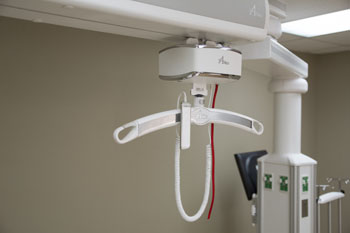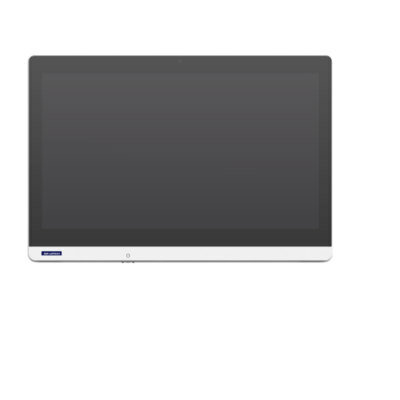Suspended Boom Helps Move and Support Surgical Patients
By HospiMedica International staff writers
Posted on 29 Apr 2016
A novel transfer system provides a safe, ergonomic method for shifting patients into the surgical field directly from a ceiling mounted boom.Posted on 29 Apr 2016
The Amico (Richmond Hill, ON, Canada) Patient Lift Pendant (PLP) is designed to assist with the transferring and repositioning of immobilized patients weighing up to 454 kilograms in the operating room (OR), and can also be used to elevate and hold limbs or other appendages during long surgical cases, all with the aid of the harness. Feature of the system include direct power to ensure that the PLP is always charged and ready for use; a single structural support; and an electric brake handle that enhances safety and eliminates the need for a pneumatic or nitrogen line.

Image: The Patient Lift Pendant (PLP) system (Photo courtesy of Amico).
The PLP also eliminates the need to install additional tracks in the ceiling, by integrating the patient lift track into the pendant arm itself, which frees up limited ceiling space for proper pendant placement and for mounting medical lighting and/or video systems. The PLP can also be easily integrated into the Amico Spectra Series pendant system, in both reverse and standard configurations, further increasing real estate in the ceiling in order to allow for installation of additional medical equipment.
Musculoskeletal injuries are a safety risk that healthcare professionals face on an everyday basis, with nurses, nurses' aides, health aides, radiology technologists, and physical therapists making up five of the top 10 professionals at the greatest risk for injuries such as damage to muscles, ligaments, tendons, nerves, bursae, joints, cartilage, and intervertebral discs. The injuries generally result from the long-term cumulative physical effort of patient transfers, as well as acute effects resulting from accidents during transfers. They may also develop from peak load, which occurs when a onetime task requires the body to perform above its capacity.
Related Links:
Amico














